A note from the editors: An abridged version of this photo essay appears in the Autumn 2023 print issue of Northern Woodlands magazine. We were fascinated by Steven Arcone’s detailed study of early season ice formations and hope that you enjoy them, too. Arcone, a retired geophysicist and adjunct professor at Dartmouth College, has made 12 research trips to Antarctica, lost count of those to Alaska, and has published 80 journal articles – mainly on radar exploration of glaciers, glacial sediments, and permafrost.
“Stick season,” the month or so between the mid-autumn foliage color-fest and winter’s first sparkling snows, might seem an unappealing time for outdoor photography. However, by mid-November, I anticipate a colorful treat from a small pond near my home in West Lebanon, New Hampshire. The pond has no formal name, so I call it Chambers Pond because it lies within the 19-acre Chambers Memorial Reserve. It is about 240 yards east of, and about 170 feet above, the Connecticut River and sits on a bedrock plateau covered with glacial debris. On a sunny morning after an early freeze, the pond displays a variety of ice formations, many resembling branches, stars, feathers, and grids. Blue and yellow light scatters from these formations, and still-colorful leaves are visible just beneath the pond’s frozen surface.
Last autumn, I documented three episodes of surface ice formations between November 15 and December 9. I used a variety of camera angles and lenses, including macrophotography of near-shore formations and of more distant areas. I calculated the size of off-shore ice formations based on such considerations as focal point distance and shoreline reference objects, and I directly measured the size of near-shore images.
Ice skims can form on any water body on a cold night. Calm, fresh water does not spontaneously freeze when its temperature drops below 32 degrees, but in this “supercooled” state, it’s subject to rapid freezing as temperatures continue to drop or a light breeze disturbs the surface. “Seed” particles such as dust or larger objects that protrude through the water’s surface create platforms for crystalline growth, a process called nucleation. What makes Chambers Pond or any small, shallow pond special for spectacular mid-autumn ice formations are the many branches, twigs, stems, and leaves that break the surface and provide nucleation sites.
Recrystallization, melting, and snow can all ruin these formations very quickly, so don’t delay looking for them when the temperature drops.
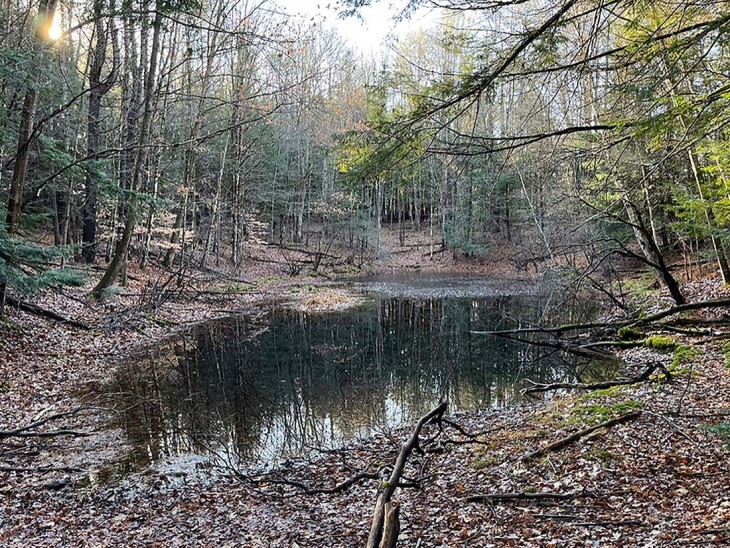
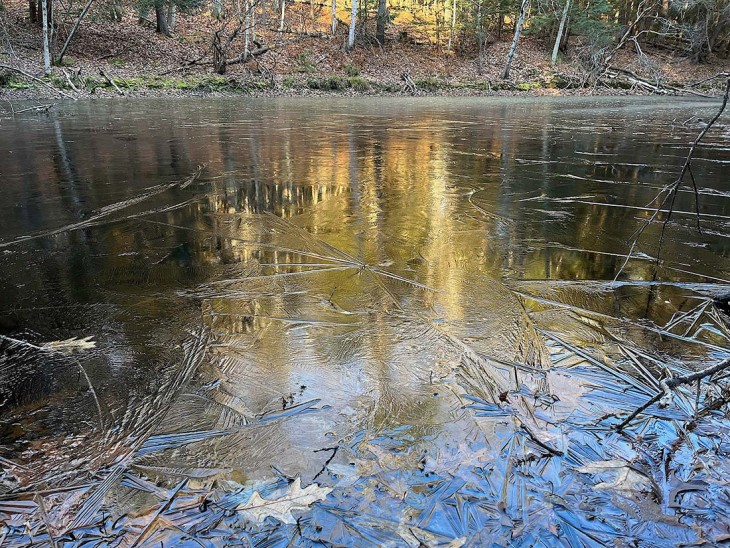



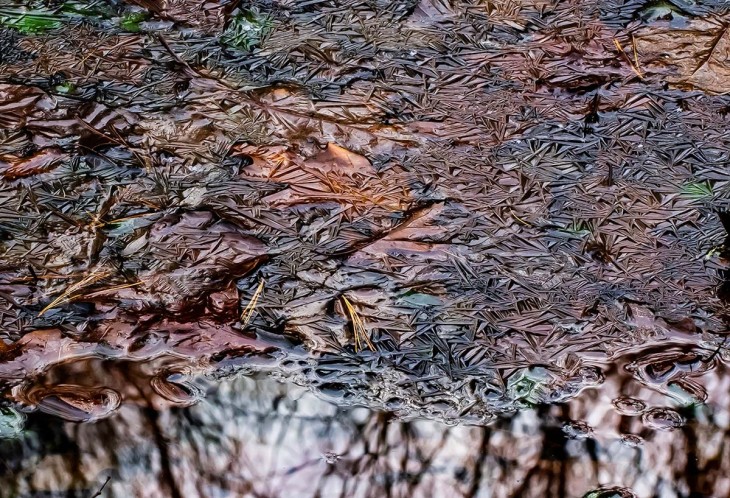
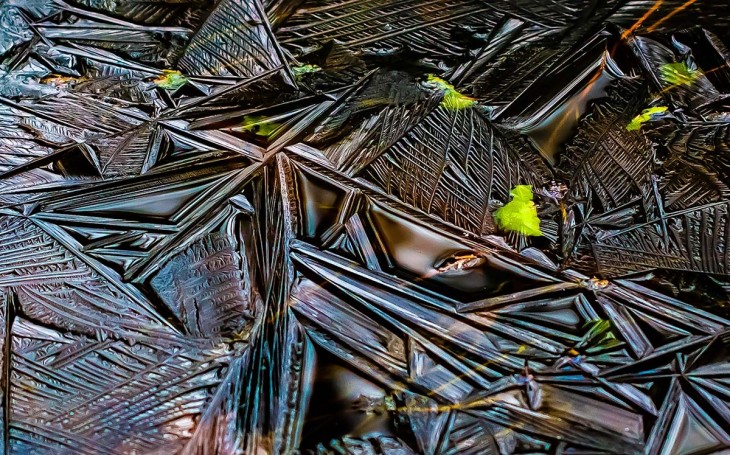
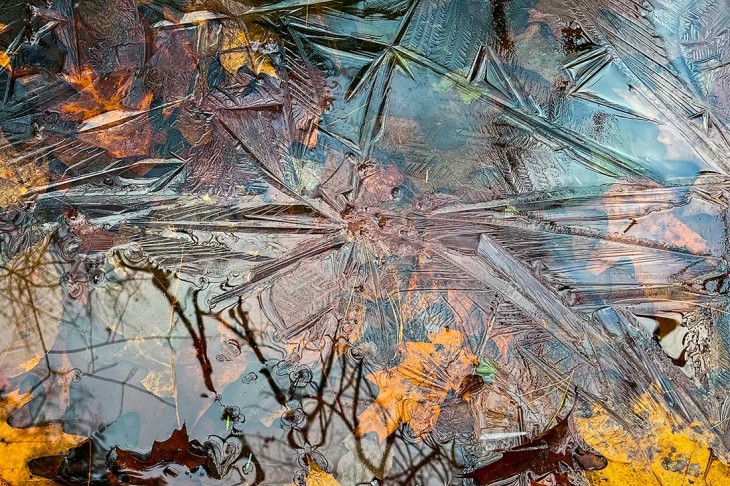
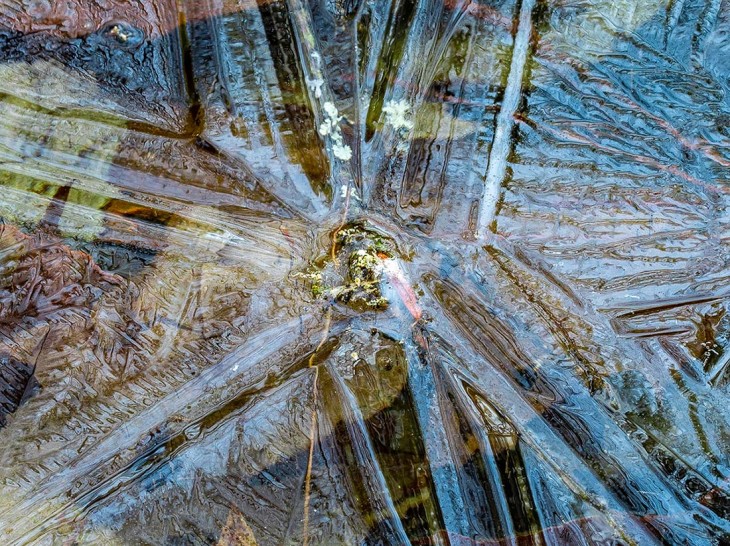
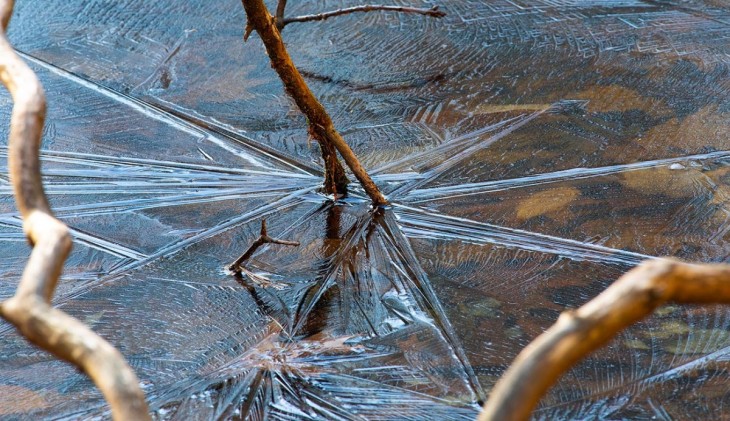



Discussion *